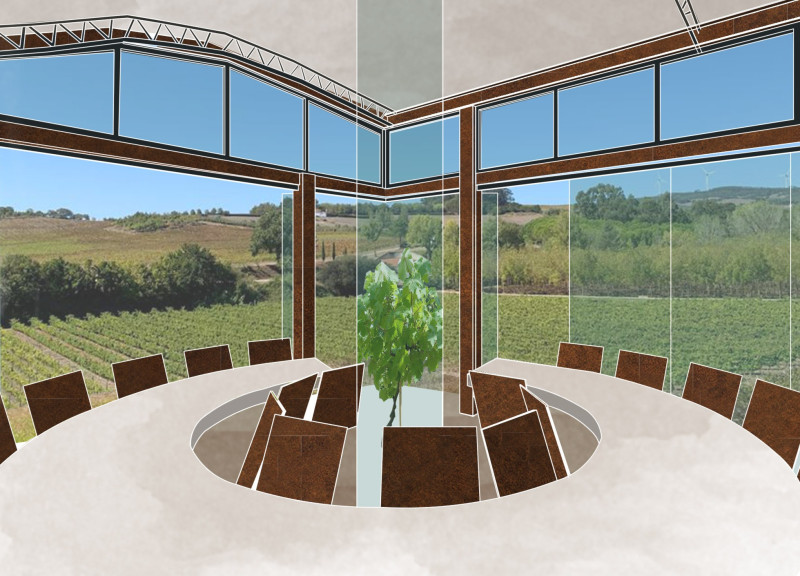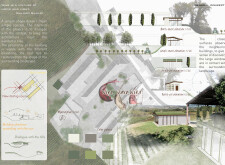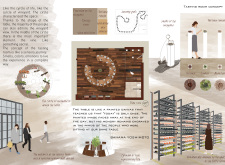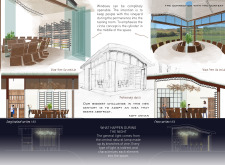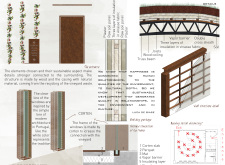5 key facts about this project
The design is located in a scenic area characterized by rolling hills, creating a natural backdrop for a wine tasting facility. The goal of the design is to enhance the experience of wine appreciation while connecting visitors to the surrounding landscape. The design concept embraces simplicity in its form but deeply engages with the site, allowing the building to fit comfortably within its context.
Form and Landscape Interaction
The roof of the building takes on shapes that mimic the nearby hills, creating a connection between the structure and the landscape. This thoughtful design decision adds visual interest and offers varying views of the beautiful scenery surrounding the tasting room. By harmonizing with the landscape, the architecture encourages people to immerse themselves in their environment as they explore.
Tasting Room Design
At the heart of the facility is the tasting room, an inviting space designed to offer a multi-sensory experience. Its circular layout encourages visitors to interact with one another while focusing on the central vine, a symbol of the vineyard’s essence. This design choice creates a shared sense of belonging among guests and evokes a connection to the life and culture of wine.
Materiality and Sustainability
Materials used in the building reflect a commitment to the environment and local traditions. Wood and other natural materials sourced from recycled vineyard waste enhance the structure's aesthetic and contribute to sustainability. This approach strengthens the connection between the architecture and the landscape, emphasizing a responsible relationship with nature.
Lighting Considerations
Lighting is carefully considered to shape the atmosphere inside the tasting room. A central fixture made from vine branches provides soft, indirect light, highlighting the room’s features without being overwhelming. This design choice creates a warm and welcoming ambiance in the evenings, making it an inviting space for gatherings.
The entrance to the tasting room includes a semitransparent wall divider that filters in natural light, offering a bright and open atmosphere.


